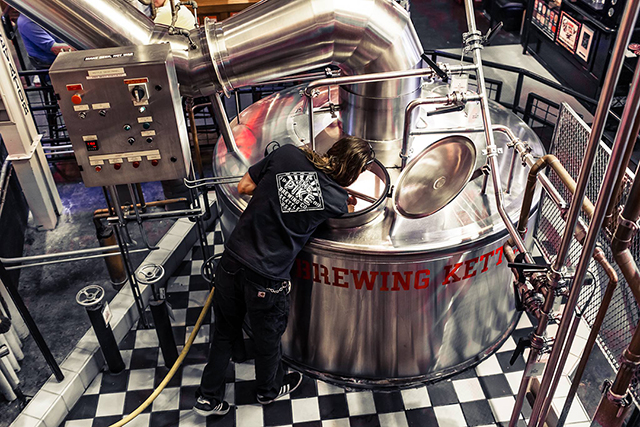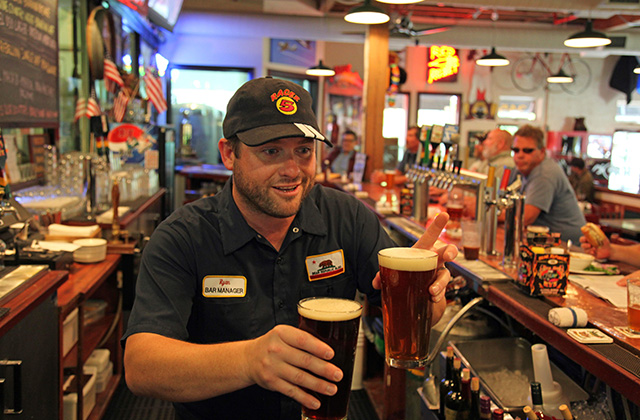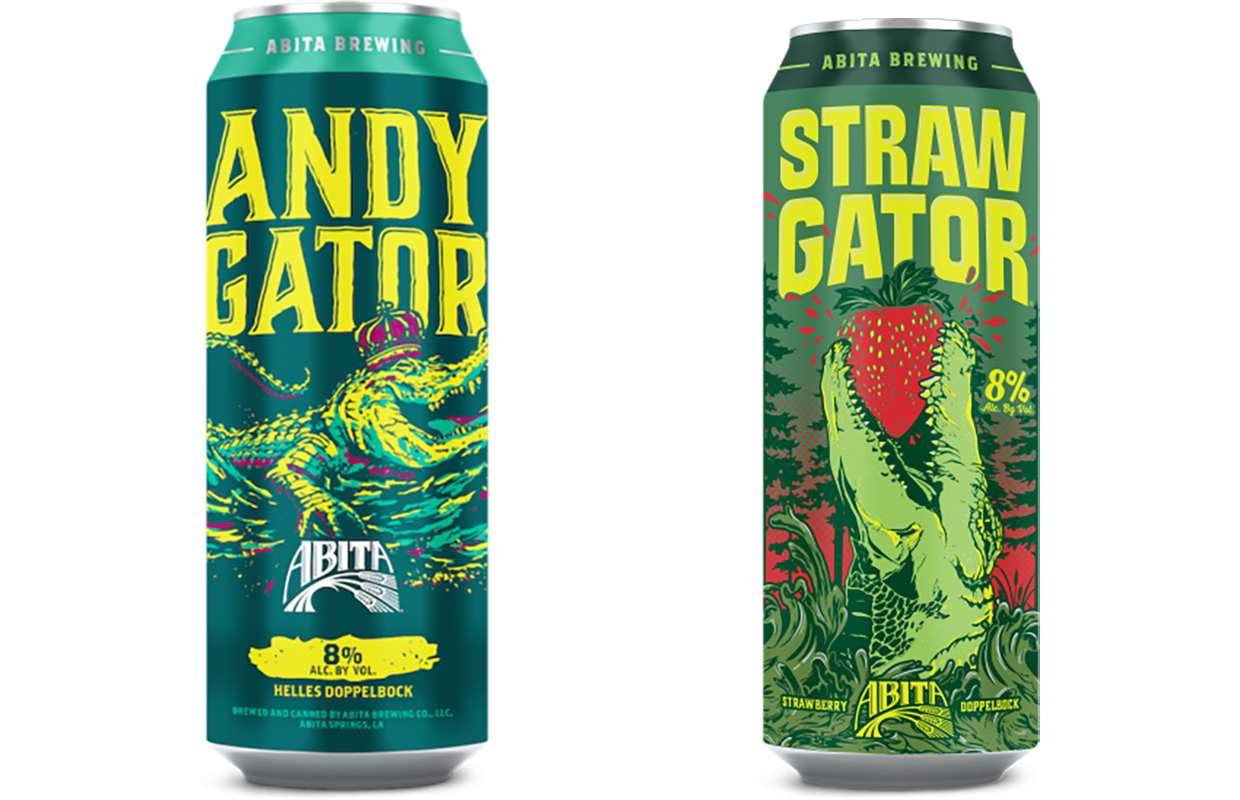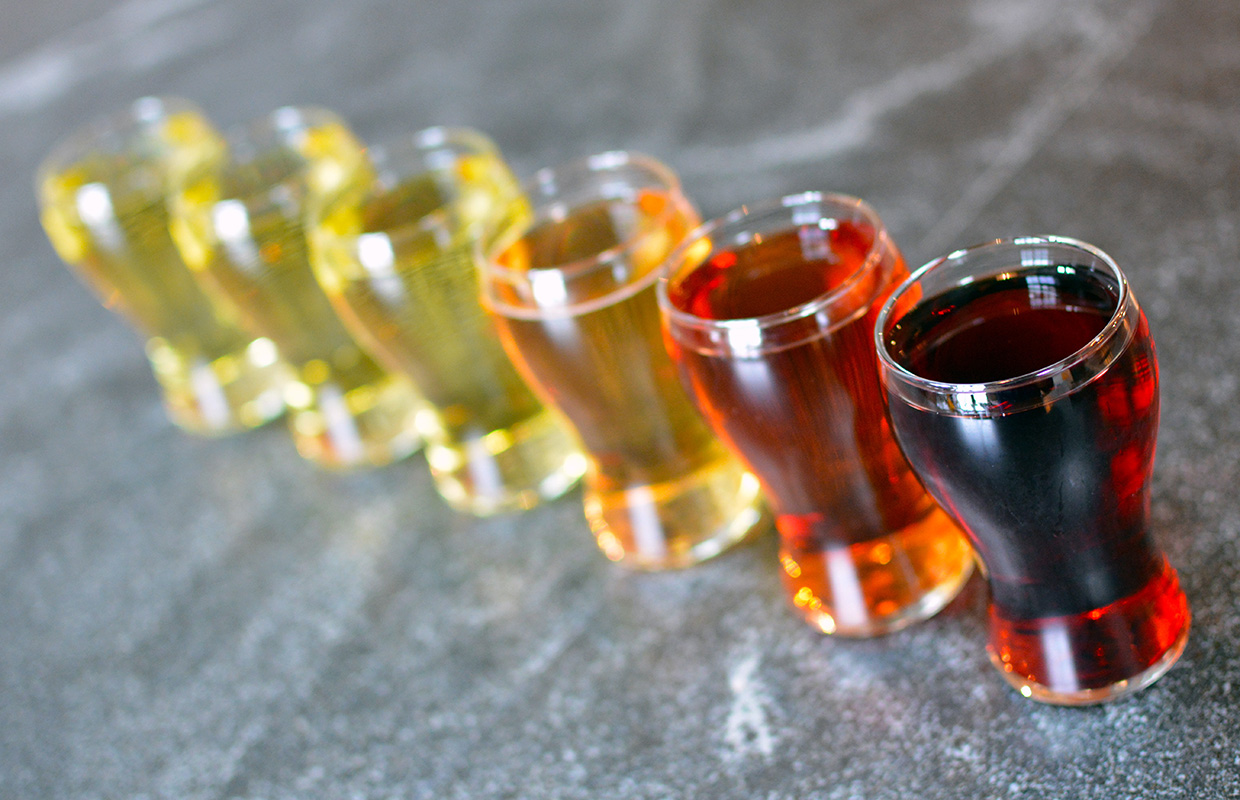
Sustainability certainly can matter to some consumers and most breweries we have spoken with over the years are always glad to help those customers make informed decisions.
For Seattle’s Pike Brewing, Stasia Brewczynski said the 30-year-old facility is passionate about sustainable, well-crafted, and locally-made products, and the brewery’s Communications Director is always thrilled to share that passion with guests.
That means having a list of best practices established to be able to effectively communicate to not just the consumer, but setting up a brewery’s staff for success with the knowledge of what is needed.
“Some sustainability efforts are part of staff training — our composting program for example, or how to brew using the least amount of water necessary,” Brewczynski said. “Others are incentives like our public transportation program which offers employees a benefit that will result in more sustainable actions.”
For the first 10 years Switchback Brewing’s existence was draught only and Plant Engineer, Gretchen Langfeldt, said waste was very minimal.
“We didn’t have to deal with bottles, cans, or any of the ancillary packaging so life was pretty simple,” Langfeldt said. “It was quite an adjustment when we entered the world of bottling and suddenly had piles of cardboard to deal with. We’ve adapted to this growth and are continuously working with our local solid waste district to keep our waste in the appropriate streams.
“It just goes to show that draught beer in endlessly reusable stainless kegs is truly the most environmentally friendly package.”
Langfeldt said she is most proud of the fact that Switchback, located in Burlington, Vermont, has built a culture of reducing and reusing.
“Our crew is very conscious of not creating extra waste and finding secondary uses for materials while still maintaining complete focus on beer quality,” she said. Some of those secondary uses, for example, are using empty chemical drums as trash, recycling, and scrap wood bins throughout the brewery; having excess building material (wood, wire, conduit, etc.) is stored for use on future projects; and anything they can’t use they offer to local community members.
“We’ve even partnered with a neighborhood craftsman, Tao Woodworking, to create a custom stand up paddleboard using wood from the frames that our packaging lines were shipped on. The board was raffled off at our Flynn on Fire Festival with the proceeds going to the Lake Champlain Land Trust, a local conservation non-profit.”
Obviously some items simply aren’t suited for reuse and must be recycled, such as stretch wrap and super-sacks.
Since 2012 Switchback has been recycling all of the LLDPE stretch wrap that comes into the facility through its local municipality, Chittenden Solid Waste District.
“Last year alone we kept the equivalent of three 20-foot shipping containers worth of stretch wrap out of the landfill through this program,” Langfeldt said. “We also ship all of our empty super-sacks to a local recycling center for processing.”
From its start in 1988, North Coast has strived to make as small an impact on the environment as possible.
“In those days, curbside recycling was just emerging and there were no commercial avenues for reuse of non-returnable packaging,” said North Coast Brewmaster Chuck Martins. “Reuse of such items were solely homegrown solutions. There wasn’t a whole lot that a small microbrewery could do beyond ensuring that spent grain and food-prep waste were diverted from the waste stream.”
So North Coast utilized their spent grain and food-prep waste as animal fodder by local farmers and its spent hops became mulch for the gardens surrounding the taproom.
“We were also judicious about use of resources — like water and electricity,” Martins said. “But as a brewery’s production and sales increase, so do opportunities to implement more sustainable practices.”
Martins said that once a threshold is crossed where positive cash flow is regular and expected month after month, capital expenses that improve efficiency and sustainability become affordable. He noted that North Coast’s sustainability efforts that have moved the needle most significantly were pretty capital intensive.
Two modern vertical multiport steam boilers replaced a single, large water-tube boiler in 2012, reducing fuel gas usage by 23 percent. Replacing an undersized lauter tun with a mash filter press yields more extract per unit of malt while also decreasing the amount of water necessary to produce wort by 10 percent. Martins said it further reducing fuel gas usage by 9 percent.
“More, with less,” he said.
North Coast also invested in transporting raw materials and packaging in bulk and on returnable pallets, finding partners to reuse the packaging that can’t be eliminated, and developing a carbon farming plan that closes the loop of brewing waste by composting and returning it to the land to sequester carbon.
These and other practices have earned North Coast Brewing a TRUE Zero Waste Platinum Certification for diverting over 99 percent of solid waste from landfills. It also has covered the brewery with as many PV solar panels as the roof can carry and has generated over 620,000 KWh of electricity to date.
Sustainability has always been an important part of the Pike business model. Brewczynski said the brewery is a sustainability-focused gravity-flow, steam-powered brewhouse.
“Our ongoing switch from bottles to cans has sustainability in mind as well,” she noted. “Our restaurants, The Pike Pub and Tankard & Tun, both benefit from a composting program that contributes to eliminating 98 percent of landfill waste, and our emphasis on purchasing locally makes a huge impact in reducing our carbon footprint.”
Sustainability efforts are always ongoing and new technology and company growth can help foster it over time, she added. For example, about ten years ago, Pike installed an LED lighting system that achieved a great reduction in power. Guests who take Pike’s brewery tours are offered perspective on how the brewhouse is designed with sustainability in mind. Sourcing locally is also highlighted on both of the pubs’ menus.
“While some efforts certainly can double as marketing, all of them are core to the philosophy of Pike,” Brewczynski said.
Langfeldt added that the Brewers Association’s Sustainability Tools have proved to be extremely helpful in tracking our efficiency efforts and provide Switchback with valuable industry comparison data as it looks for ways to continuously improve.
Telling the sustainability story is crucial to North Coast’s sales approach as well.
“In fact, it’s an essential part of our story as a company, and it resonates with today’s craft beer consumer more than ever,” Martins said. “From distributors, to national chains, to small grocery stores and mom and pop restaurants, the people we do business with on a day-to-day basis are embracing these practices more than ever.“
Martins also said that North Coast Brewing prides itself in partnering with like-minded organizations outside of the craft beer industry whenever possible to make sure the message reaches as broad of an audience as possible.
“We keep this in mind with every trade event we participate in from festivals, to tastings and beyond,” he said. “From coast to coast, our sales teams make daily use of our B-Corp status, our Non-GMO Project verification status, our waste stream composting operation.
“We also share our efforts to raise funds for marine mammal research and rescue as well as supporting jazz education to not only tell our story, but to make us “globally local” to every community in which we sell beer. In this increasingly hyper-local craft beer market, our story sets us apart from other breweries and unifies us with conscientious consumers.”




1 Trackback / Pingback